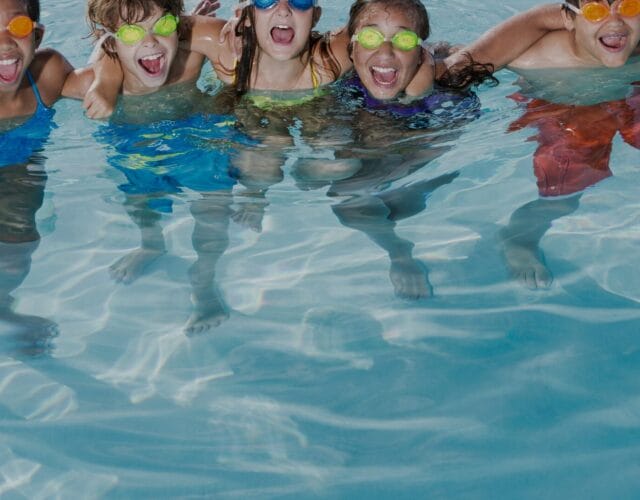After 18 months of social isolation and school closures our kids are back in the classroom and attempting to return to life as they knew it. As I sat down to write the blog this morning, my son texted me that his high school just went on lockdown for a potential school shooting threat. Given the recent tragic events in Michigan (and many other schools across the country) my wife and I were shaken by the news but not necessarily surprised – which is a tragedy in itself. I looked at my wife and asked, “do you want me to go get him?” We didn’t know what to do – police had flooded the school, the principal announced that the threat had been neutralized last night, but we were still left as confused parents trying to do the right thing for our kid. Below is the pic posted by a kid from his school last night, and then the text chain between Evan and I.


And this is the third one this year! Our kids are struggling. The American Academy of Pediatrics, American Academy of Child and Adolescent Psychiatry and Children’s Hospital Association declared a national emergency for the mental health of our children last month.
“As health professionals dedicated to the care of children and adolescents, we have witnessed soaring rates of mental health challenges among children, adolescents, and their families over the course of the COVID-19 pandemic, exacerbating the situation that existed prior to the pandemic. Children and families across our country have experienced enormous adversity and disruption. The inequities that result from structural racism have contributed to disproportionate impacts on children from communities of color.”
In another twist of painful irony from the pandemic, the population least affected by the virus from an infectious standpoint, have been the most severely affected by the measures put in place to fight the virus. In the past year many more children have been killed by motor vehicle crashes, firearms, or drowning than by Covid.

“The pandemic has struck at the safety and stability of families. More than 140,000 children in the United States lost a primary and/or secondary caregiver, with youth of color disproportionately impacted. Young people are experiencing soaring rates of depression, anxiety, trauma, loneliness, and suicidality that will have lasting impacts on them, their families, and their communities.” According to the federal Centers for Disease Control and Prevention, emergency department visits for suspected suicide attempts among adolescents jumped 31% in 2020, compared with 2019. In February and March of this year, emergency department visits for suspected suicide attempts were 51% higher among girls aged 12–17 than during the same period in 2019.
RATES OF DEPRESSION AND ANXIETY HAVE DOUBLED
According to JAMA review study, depression rates have doubled in kids during the pandemic to nearly 1 in 4, and rates of anxiety have doubled as well to 1 in 5. Accordingly, referrals for mental health counseling have soared in short staffed schools, many of which are unable to accommodate the requests. The map below shows the huge discrepancy in school counseling services available across the country. The southern United States is drastically understaffed.

Our family experienced its share of mental health struggles during the pandemic. Our daughter struggled with anxiety as a young college student, and as her social circles closed during the pandemic, the anxiety worsened.
But the most severely affected was our 14 year old son who was completely cut off from his personal interaction with peers. He would walk in the door and immediately run to his room. It was like a cave in there, with his screen addiction evident in every corner. We would remove his phone and he found an ipad. Remove the ipad and he got his sister’s old computer. At one point he dusted cobwebs off of a Nintendo DS and figure out how to connect it to the Wifi. He was withdrawn and sullen – not our usual bright and cheery guy.
I became incredibly frustrated with him, naively taking the opportunity to yell at him to get off his ass, versus commiserating with him to see how I could support him – lesson learned. When school reopened, he became a new child – speaking more, less time in his room while at home, less overall attitude. Unfortunately, many families have not fared as well. We have several family friends whose kids have really gone off the deep end, and have not quite reemerged despite restarting school.
SCREEN TIME, THE SILENT KILLER
Excess screen time remains a major issue for young people in today’s mid pandemic world. Young people who spend seven hours or more a day on screens are more than twice as likely to be diagnosed with depression or anxiety than those who use screens for an hour a day, finds a study published in the journal Preventive Medicine Reports.

1h/day use is OK. More then 1 h/day of use, daily screen time were associated with lower psychological well-being, including less curiosity, lower self-control, more distractibility, more difficulty making friends, less emotional stability, being more difficult to care for, and inability to finish tasks. Moderate use of screens (4 h/day) was also associated with lower psychological well-being.
Don’t get me wrong, we still have to stay on our son’s case constantly to put his phone down, engage with the family, go outside, do something. It’s fatiguing frankly. As I mentioned in LAST WEEKS BLOG, kids have also shown deterioration in their physical health with weight gain and worsening diets. As we move into the winter months, I think it’s crucial to get kids (teenagers included) outside.
When my kids were little, we always knew it was time to get them out of the house when they started torturing the dog. There seems to be some gene in kids that makes them solve their boredom by trying new and interesting ways to make the dog’s life miserable. Kicking them out of the house always seemed to be the best solution in our family.

Thinking back to my own childhood, each day the goal was to go outside “and play”. Didn’t matter what you played, the holy grail was to just be out there. My mom would say “Just be home before the street lights come on”. That’s why the most brutal of all punishments for me (despite the belt we kept on hand) was grounding – i.e. no going outside. Seems like nowadays, kids are relieved if they don’t have to leave the house. The majority of parents perseverate over the kids getting dirty, scraping a knee, breaking a bone, being in the sun, being abducted from the yard, and a dozen other things.
Of note, on average, fewer than 350 people under the age of 21 have been abducted by strangers in the United States per year since 2010, the FBI says. From 2010 through 2017, the most recent data available, the number has ranged from a low of 303 in 2016 to a high of 384 in 2011 with no clear directional trend. For you math wizards out there, this equates to a 1 in 208,000 chance of abduction – versus a 1 in 9094 chance of your child dying in a car crash. But you never think twice about loading little Jimmy and Mary into the family truckster for a ride. Sorry, I digress.
I’ve preached the importance of diet for mental health for years. Just read through the blog or watch my IG stories for healthy eating tips. But my call to all parents this holiday season is to GET YOUR KIDS OUTSIDE. 
Simply being outside has been shown to have numerous mental health benefits. Numerous studies have shown time outside can reduce symptoms of depression and anxiety, and it gets them off their screens providing additional benefit. Another study showed kids with ADHD were much better able to concentrate after a 20 minute walk in the park. The biggest benefit is seen with the increase in physical activity when outside. Did you know that kids who go outside for 20min when they come home from school, finish their homework faster and better, then those who come home and decompress with ipads and video games?
According to studies compiled by the CDC, “Physical activity also has brain health benefits for school-aged children, including improved cognition (e.g., academic performance, memory) and reduced symptoms of depression. Regular physical activity in childhood and adolescence can also be important for promoting lifelong health and well-being and preventing risk factors for various health conditions like heart disease, obesity, and type 2 diabetes.
I’m sure you will also remember from my epic Vitamin D Blog post, that even as little as 5 minutes of midday sunshine can raise vitamin D levels – though I would aim for at least 30 minutes. And feed kids before you send them out – they Do Not need a snack out there. Since when do kids need a snack break in order to play for a couple hours?
“THERE’S NO SUCH THING AS BAD WEATHER, ONLY UNSUITABLE CLOTHING.”
And yes, the weather is getting colder, but last I checked our modern way of life has given us an abundance of clothing to wear – no more loin cloths here! Start by embracing the British guidebook writer Alfred Wainwright’s point of view: “There’s no such thing as bad weather, only unsuitable clothing.” So stop blaming the weather as the reason your kids can’t go outside. I actually have never heard of a child sustaining severe rain or snow damage – simply from the rain or snow.
We went through a phase where my sons simply refused to wear pants – the youngest is actually still stuck in that phase. One winter we had the rare southern snow storm and got a few inches of snow, a real blizzard for us. Mr Stubborn not only refused to wear snow pants, he wouldn’t even put on long pants. So out he went in his sport shorts to play with the kids – 10 minutes later, he sheepishly snuck in the door to put some pants on. Yes, I gloated endlessly – a win for the parents.
Nonetheless, it’s best to cover the hands, head, heart and feet. In our experience, feet are the key. Dry feet are warm feet, so think waterproof insulated boots or rubber boots paired with fleece or wool liners, plus cozy wool or synthetic socks (not cotton, which doesn’t wick moisture away from the skin and takes ages to dry). For hands, choose mittens over gloves and a waterproof outer layer is always helpful.
But let’s not make this too complicated – use leverage. Tell them an hour outside gets them an hour of screen time. If you can get outside with them that’s even better. All the benefits of physical activity and the outdoors also hold true for adults. This pandemic does not look like its ending any time soon – let’s try to start rebuilding the damage to our kids’ brains that has already occurred.
P.S. – If you live up north you may not be getting enough vitamin D during the winter months. If you need a supplement, check these out.
Yours in Good Health,
Drs. Ana-Maria and John Temple




